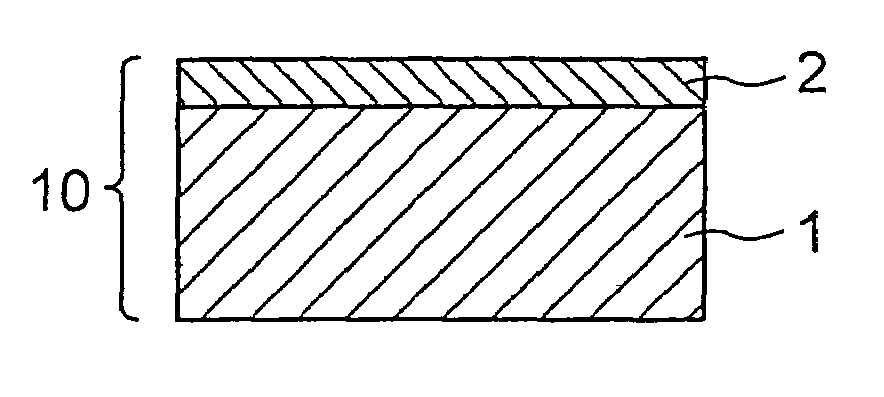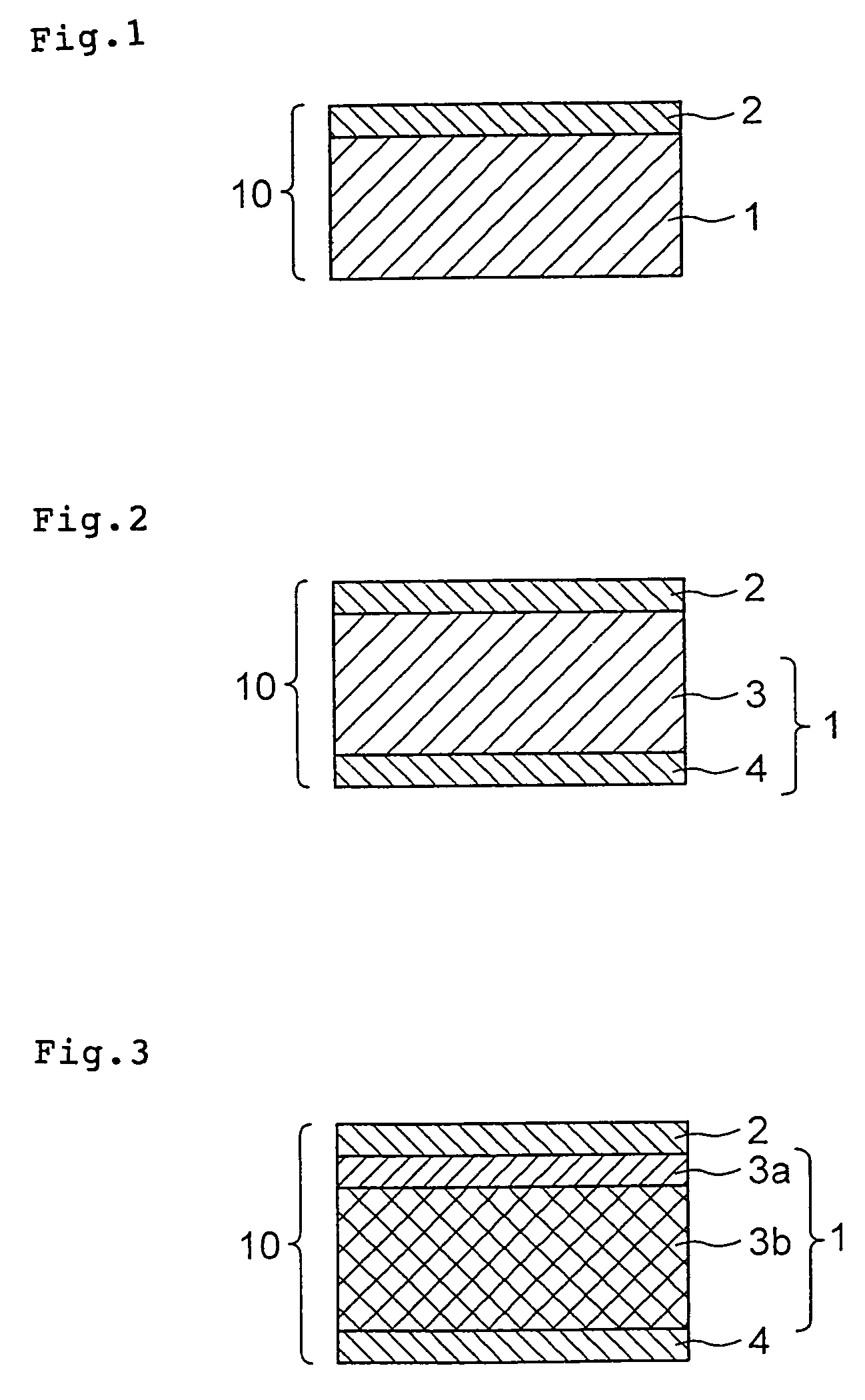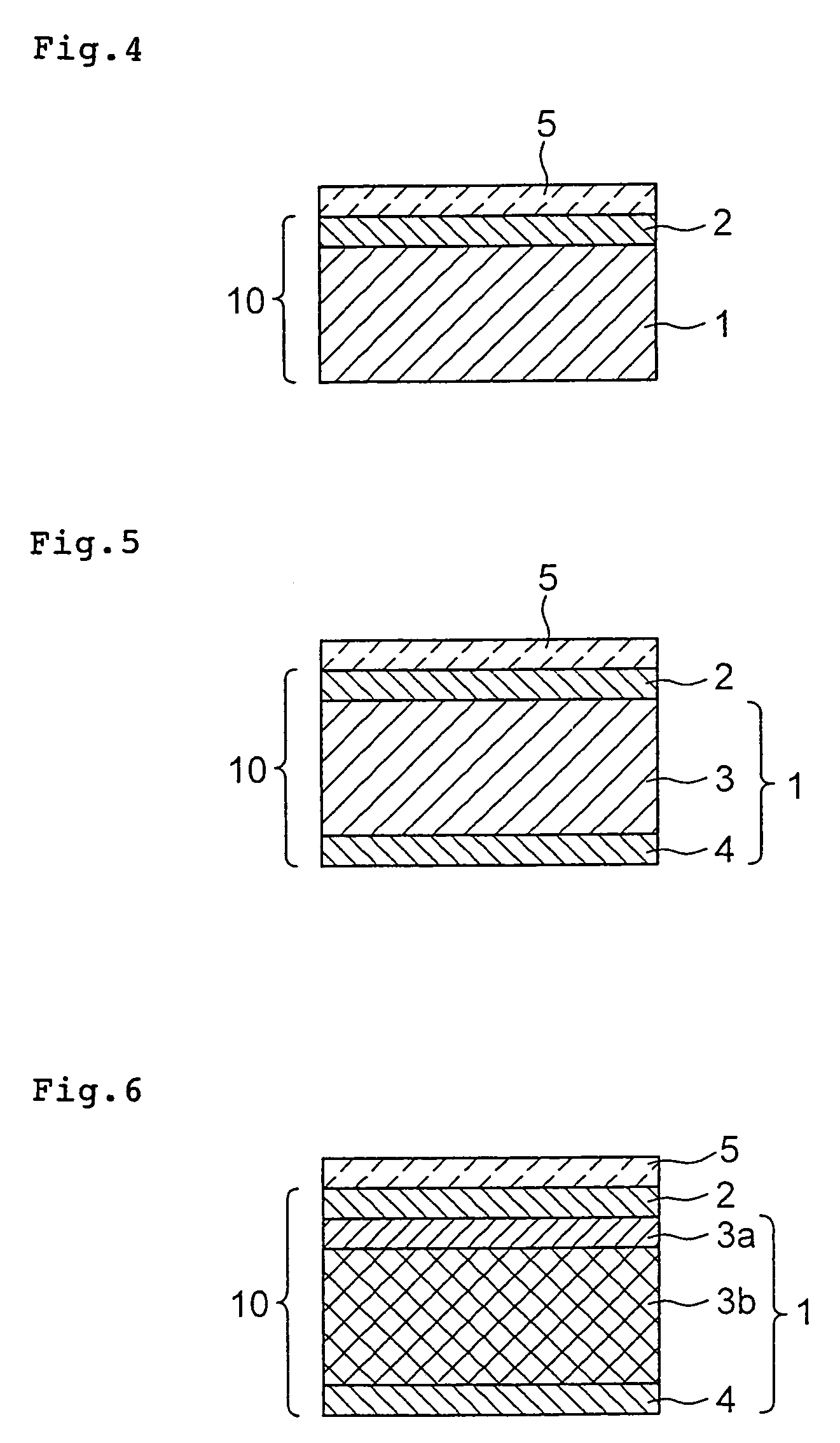Wafer machining adhesive tape, and its manufacturing method and using method
a technology of wafer machining and adhesive tape, which is applied in the direction of film/foil adhesives, synthetic resin layered products, transportation and packaging, etc., can solve the problems of chipping or fragmentation and cracking, chip failure, and circuitry corrosion of the chip
- Summary
- Abstract
- Description
- Claims
- Application Information
AI Technical Summary
Benefits of technology
Problems solved by technology
Method used
Image
Examples
example 1
[0165]The following materials were used as the raw materials for the respective layers constituting the adhesive tape 10. As the components to constitute the substrate layer 1, 80 parts by weight of propylene-ethylene-1-butene random copolymer (r-PP) (consisting of 5 mol. % of ethylene, 5 mol. % of 1-butene) and 20 parts by weight of styrene-ethylene-butylene-styrene block copolymer (SEBS) (Taftec™ H1052 manufactured by Asahi Chemical Industry Co.) were used. As the components to constitute the adhesive layer 2, 100 parts by weight of propylene-1-butene-4-methyl-1-pentene copolymer (PB(4-MP)) (consisting of 50 mol. % of propylene, 20 mol. % of 1-butene, and 30 mol. % of 4-methyl-1-pentene) was used. FIG. 12 shows the storage modulus G′, loss modulus G″, and tan δ of the adhesive layer which were measured in accordance with the aforesaid procedure for measuring said viscoelasticity.
[0166]The melt flow rate of each layer was adjusted to 15 g / 10 min. for the adhesive layer and 15 g / 10 ...
example 2
[0177]For the raw materials for the respective layers constituting the adhesive tape 10, 80 parts by weight of the same r-PP as used in Example 1 and 20 parts by weight of hydrogenated styrene-isoprene-styrene block copolymer (SEPS) (Septon™ 2063 manufactured by Kuraray Co. Ltd.) were used as the components of the substrate layer 1. As the components of the adhesive layer 2, 95 parts by weight of the same PB(4-MP) as used in Example 1 and 5 parts by weight of ethylene-α-olefin co-oligomer (LEO) (Lucant™ HC-20 manufactured by Mitsui Chemicals, Inc.) were used. The test results covering the viscoelasticity of the adhesive layer are shown in Table 3 for the three different temperature levels of 15° C., 25° C. and 35° C.
[0178]Under the conditions shown in Table 1, an adhesive tape was formed in a same manner as employed in Example 1. After providing a release tape (Tohcello Separator™ SP T-18, thickness: 37 μm manufactured by Tohcello Co.) on the adhesive layer, the adhesive tape was sl...
example 3
[0180]For the raw materials for the respective layers constituting the adhesive tape 10, low-density poly-ethylene (LDPE) (density: 0.92 g / cm3) was used as the component of the surface layer 4 in the substrate layer 1. As the components of the intermediate layer 3 in the substrate layer 1, 80 parts by weight of the same r-PP as used in Example 1 and 20 parts by weight of hydrogenated styrene-isoprene-styrene block copolymer (SEPS) (Septon™ 2063 manufactured by Kuraray Co. Ltd.) were used. As the components of the adhesive layer 2, 80 parts by weight of the same PB(4-MP) as used in Example 1, 5 parts by weight of LEO, and 15 parts by weight of styrene-isoprene-styrene block copolymer (SIS) (SIS5229N manufactured by JSR Co.) were used.
[0181]An adhesive tape was formed in accordance with the same procedure as in Example 1 under the operating conditions shown in Table 1, except that the surface layer and intermediate layer were included and the co-extrusion temperature was set at 220° C...
PUM
 Login to View More
Login to View More Abstract
Description
Claims
Application Information
 Login to View More
Login to View More - R&D
- Intellectual Property
- Life Sciences
- Materials
- Tech Scout
- Unparalleled Data Quality
- Higher Quality Content
- 60% Fewer Hallucinations
Browse by: Latest US Patents, China's latest patents, Technical Efficacy Thesaurus, Application Domain, Technology Topic, Popular Technical Reports.
© 2025 PatSnap. All rights reserved.Legal|Privacy policy|Modern Slavery Act Transparency Statement|Sitemap|About US| Contact US: help@patsnap.com



